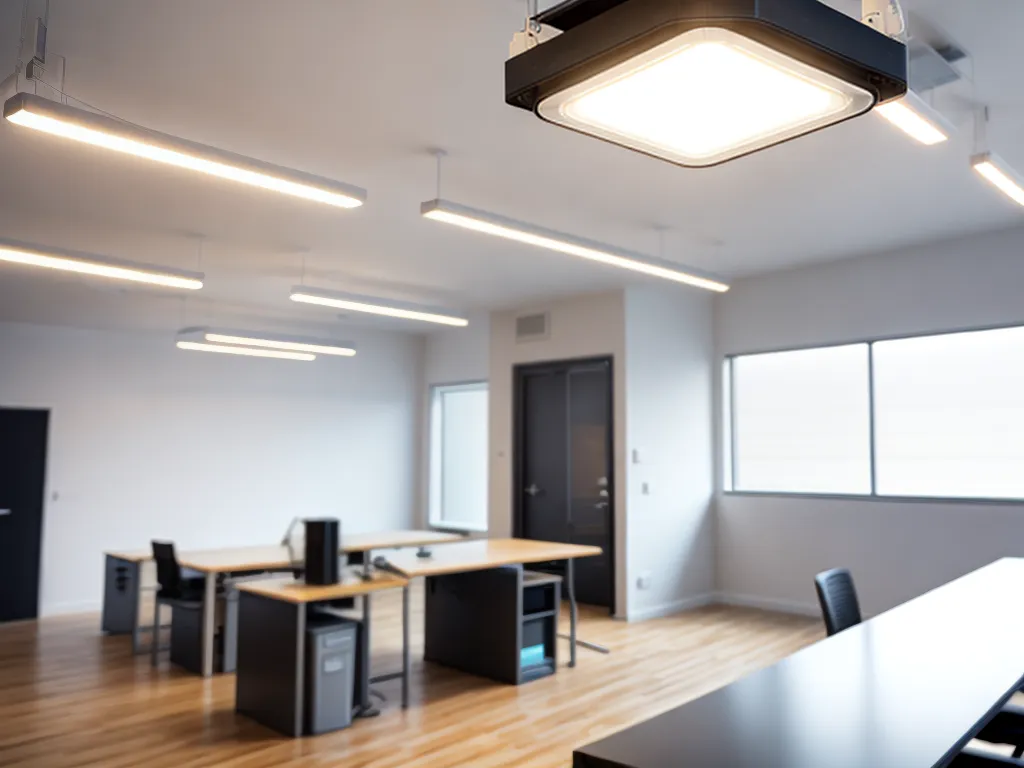
How to Save on Your Business's Energy Costs with Smart Lighting
Introduction
Reducing energy costs is crucial for any business looking to increase profits and become more sustainable. Lighting accounts for 12-15% of the total energy used in commercial buildings, making it one of the biggest opportunities for savings. By upgrading to smart lighting solutions, businesses can greatly reduce their energy usage and costs. In this article, I will discuss the benefits of smart lighting and provide actionable tips on how to implement it in your business to maximize energy and cost savings.
Why Smart Lighting Saves Energy
Traditional lighting like fluorescent and incandescent bulbs are inefficient - most of the energy they consume gets wasted as heat instead of light. They also don't allow for much control beyond manual switching on and off.
Smart LED lighting systems are far more energy-efficient and allow for greater control and automation through sensors, timers, and smart controls. This enables businesses to reduce energy waste and only use light when and where it's needed.
Specific ways smart lighting reduces energy costs include:
-
LED bulbs use at least 75% less energy and last 25 times longer than incandescents. Their energy savings pay for themselves within months through lower bills.
-
Occupancy sensors automatically turn lights on and off based on detecting motion. This prevents lights being left on in unused spaces.
-
Daylight harvesting sensors dim artificial lights when sufficient natural light is available, reducing electricity consumption.
-
Smart controls like wireless switches and smartphone/web apps allow remote control of lighting based on schedules and occupancy. This further optimizes usage.
-
Automated load shedding instantly reduces non-essential lighting during peak demand to avoid high energy charges.
-
Zoned lighting splits lighting into segments so only occupied areas are lit. For large commercial spaces, this can cut lighting energy use by half or more.
Tips for Implementing Smart Lighting
Here are some key steps businesses can take to upgrade their existing lighting systems to smarter, more energy and cost-efficient solutions:
1. Conduct a Lighting Audit
-
Do a full inventory of existing lighting fixtures, bulbs, and controls.
-
Note their age, condition, lighting output, energy usage, and controllability.
-
Identify areas for improvement and savings opportunities.
2. Determine Lighting Requirements
-
Assess what lighting levels are actually needed in each area of the building. Lighting designers recommend:
-
Offices - 300-500 lux
-
Hallways - 100-200 lux
-
Storage areas - 200-300 lux
-
-
Consider tuning existing lighting to lower, still sufficient levels. Overlighting wastes energy.
3. Select Efficient Lighting Solutions
-
LED bulbs offer the biggest efficiency gains. Choose models certified by ENERGY STAR or DesignLights Consortium.
-
For高-use areas, consider LED tube lights or fixtures tailored to specific applications like warehouses or offices.
-
Occupancy sensors, daylight harvesters and smart controls will maximize energy savings.
4. Do Installation and Integration
-
It's best to have lighting contractors handle the installation for safety and proper integration.
-
For advanced controls, the lighting may need integration with building management or automation systems.
-
Make sure to dispose of old lighting properly. LEDs contain electronics that shouldn't end up in landfills.
5. Monitor Usage and Savings
-
Use energy management software or advanced lighting controls to track real-time and historical lighting energy usage.
-
Compare usage before and after the lighting upgrade to calculate savings and return on investment.
-
Make any needed tweaks to maximize efficiency, e.g adjusting sensors or schedules.
Lighting Supplier and Financing Options
There are many lighting suppliers that cater to business clients. Large national companies like Phillips, GE, and Sylvania offer full-service custom lighting design, installation, and financing. Regional electrical and lighting contractors also provide similar services with competitive pricing.
Smart lighting upgrades can cost tens of thousands for massive warehouses or industrial facilities. However, the energy savings typically pay back the upfront costs in 1-3 years. Many suppliers can provide attractively structured financing plans and payment options tailored for energy projects. There are also rebates and tax incentives available from utilities and governments to offset costs.
Conclusion
Upgrading to intelligent, automated LED lighting enables businesses to substantially reduce one of their largest operational costs - electricity. The options for smart lighting controls are constantly improving with wireless networks and AI-enabled systems. By taking advantage of these innovations, companies can profit from energy savings for many years, while also improving sustainability. With proper planning, any organization can find a smart lighting solution that pays back quickly and keeps their facilities operating efficiently.